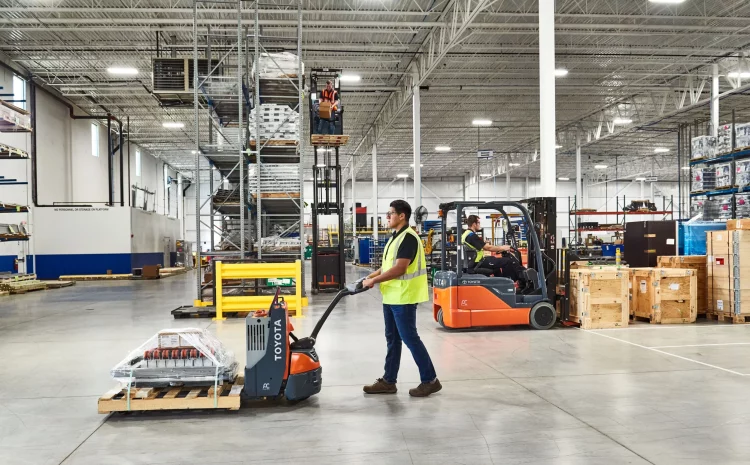
What steps should be taken to reduce the risk of damage to forklifts?
Forklifts play a vital role in warehouses and industrial settings, enabling efficient material handling and boosting productivity. However, they can be prone to accidents and damage, posing risks to operators, pedestrians, and the equipment itself. To ensure a safe working environment and protect valuable assets, it is essential to implement robust measures that reduce the risk of damage to forklifts. This article will outline crucial steps and safety rules that should be followed to mitigate potential hazards and enhance forklift safety in the warehouse.
Comprehensive Training and Certification
The cornerstone of forklift safety begins with comprehensive training and certification programs for operators. Proper training ensures that operators are familiar with the equipment’s functions, understand safety protocols, and can manage various scenarios effectively. Training should cover areas such as load handling, stability, speed limits, maneuvering techniques, and hazard identification. Regular refresher courses should also be provided to reinforce safe practices and keep operators up to date with any new guidelines or regulations.
Routine Equipment Maintenance
Regular maintenance is crucial to keep forklifts in optimal condition and prevent mechanical failures that could lead to accidents or damage. Establish an initiative-taking maintenance schedule that includes routine inspections, servicing, and repairs. Key areas to focus on include brakes, steering systems, tires, hydraulics, and safety features such as lights, alarms, and seatbelts. Additionally, encourage operators to report any issues promptly, ensuring that repairs are addressed promptly to minimize downtime and prevent potential accidents.
Clear Traffic Management and Signage
Effective traffic management is essential to minimize collisions and enhance overall forklift safety within the warehouse. Develop clear traffic flow plans, using designated pathways and one-way systems wherever possible. Adequate signage, including floor markings, directional signs, and speed limit indicators, should be prominently displayed to guide operators and pedestrians, minimizing the risk of accidents. Regularly review and update traffic management strategies to accommodate changing operational needs.
Load Capacity and Stability Awareness
Understanding load capacity and maintaining stability is crucial to avoid forklift accidents and equipment damage. Operators should be well-informed about the maximum load capacity specified for each forklift model and the importance of not exceeding it. Educate operators on proper load placement and securement techniques, emphasizing the significance of evenly distributed loads and using appropriate attachments when necessary. Overloading or imbalanced loads can compromise the forklift’s stability and increase the risk of tip-overs.
Pedestrian Awareness and Separation
Pedestrian safety is as crucial as forklift safety within the warehouse. Implement clear guidelines that promote separation between pedestrians and forklift operations. Designated pedestrian walkways should be established, physically separated from forklift traffic whenever feasible. Encourage operators to use audible warning devices such as horns when approaching intersections or blind spots and enforce strict speed limits near pedestrian areas. Regular safety training for both operators and pedestrians will help foster a culture of awareness and minimize the risk of collisions.
Prohibition of Unauthorized Operation
To reduce damage risks, it is imperative to enforce strict policies against unauthorized forklift operation. Only trained and certified operators should be permitted to operate the equipment. Unauthorized personnel may lack the necessary skills, leading to accidents, damage to goods, or injuries. Display clear signage indicating that only authorized personnel are allowed to operate forklifts and regularly audit compliance with this rule.
Continuous Monitoring and Incident Reporting
Implement a system for ongoing monitoring and reporting of forklift-related incidents. Encourage operators to report near-misses, accidents, and equipment malfunctions promptly. Conduct thorough investigations to determine the root causes of incidents, identify trends, and implement preventive measures accordingly. Regularly reviewing incident reports helps identify areas of improvement and enables the implementation of targeted safety measures.
Emergency Preparedness and Evacuation Plans
In the event of an emergency, having well-defined evacuation plans is crucial to ensure the safety of both forklift operators and other personnel within the warehouse. Establish clear emergency procedures that outline evacuation routes, assembly points, and communication protocols. Conduct regular drills to familiarize employees with the evacuation process and address any potential challenges. Additionally, ensure that fire extinguishers and other safety equipment are readily available and regularly inspected.
Promote a Safety Culture
Creating a culture of safety is essential for reducing the risk of damage to forklifts. Foster a work environment where safety is prioritized, and all employees are actively engaged in maintaining a safe workspace. Encourage open communication channels for reporting safety concerns, suggestions, and near-miss incidents. Recognize and reward employees who consistently follow safety protocols and actively participate in safety initiatives. Regularly conduct safety meetings and training sessions to reinforce safe practices and address emerging risks.
Stay Updated with Regulations and Best Practices
Lastly, it is crucial to stay updated with the latest regulations, guidelines, and best practices related to forklift safety. Regularly review and assess your safety protocols to ensure compliance with relevant occupational health and safety regulations. Stay informed about technological advancements that enhance forklift safety, such as proximity sensors or automated safety features, and consider implementing them where appropriate.
Reducing the risk of damage to forklifts requires a comprehensive approach that encompasses training, maintenance, traffic management, load capacity awareness, pedestrian safety, incident reporting, emergency preparedness, and a safety-focused culture. By implementing these crucial steps and adhering to forklift safety rules in warehouse, organizations can significantly mitigate potential hazards, protect valuable equipment, and ensure the well-being of operators and personnel working in the vicinity. Prioritizing forklift safety is not only a legal and ethical responsibility but also a strategic investment in productivity, efficiency, and the overall success of the operation.
A good forklift training course also helps you understand all aspects of the safe operation and maintenance of forklifts. Contact Forklift Training Brampton today to start your forklift training course and begin your career as a successful forklift operator.

